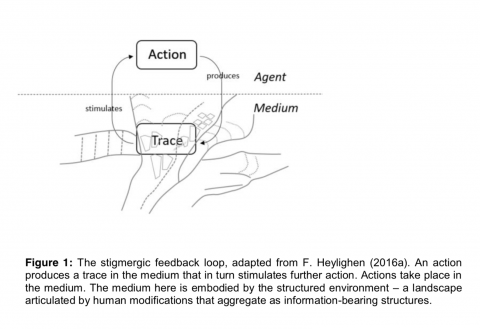line
Population formetics and the circulation of urban forms

In the the third instalment of this year’s seminar series, we continued to host a dialogue about the adaptation of evolutionary thinking to the study of cities. We were delighted to host Ya’ara Rosner-Manor from Ben-Gurion University and the Urban Clinic.
Dr. Rosner-Manor is the author of very interesting research on “the adaptation of urban codes” from one place to another. This work aligns with own theorizing in Parts I, II, and III of “Towards a Model of Urban Evolution,” which thanks to Dr. Rosner-Manor’s critical commentary we will continue to revise, in particular through closer engagement with the ideas of Christopher Alexander.
For our seminar, Dr. Rosner-Manor presented a paper on “Stigmergy in informal communities: The unrecognized Bedouin settlements in the Negev, Israel.” The abstract is below.
Informal settlements seem to lack order and are often regarded by the authorities as holding no value, when planning for rebuilding of the same area or for the relocation of the population to legitimate urbanized areas. In this paper we show, in the case of the Bedouin Villages in the Israeli desert, that consistent patterns of spatial order can be discerned in the way those informal settlements self-organize. Often these patterns reflect unique connections among the community’s social structure and the environments in which they exist. These connections, we argue, are fundamental for the future wellbeing of the community.
Drawing from the study of complex systems, we use the explanatory framework of ‘Stigmergy’ to evaluate the relations observed between social coordination and spatial order in the Bedouin villages in the Israeli Negev desert. Stigmergy, most generally, describes the collective phenomenon of indirect communication and coordination mediated by modifications of the shared environment. In this paper, it is used to identify significant socio-spatial patterns anchoring the traditional narrative of these communities to the structure of the environment they inhabit.



